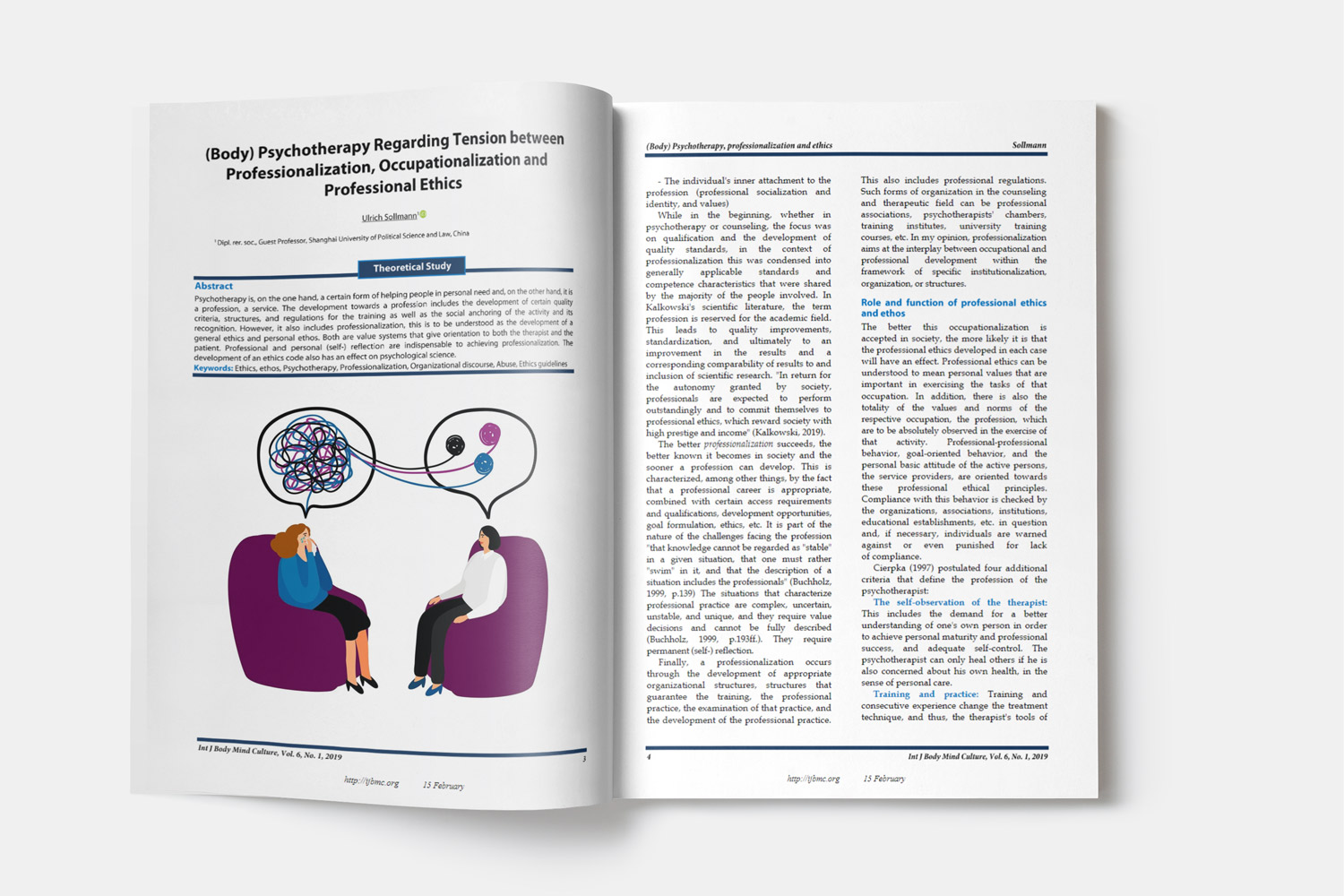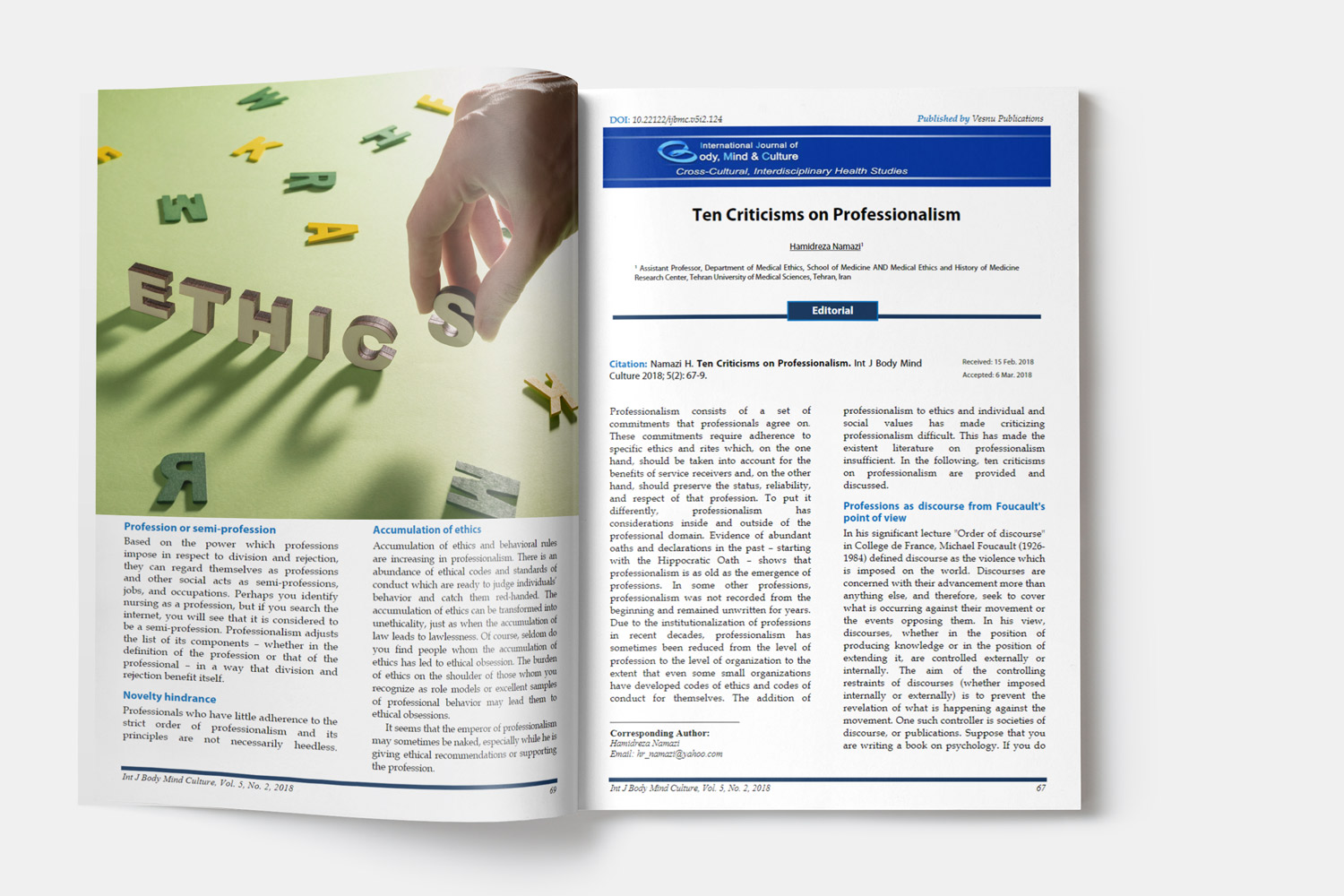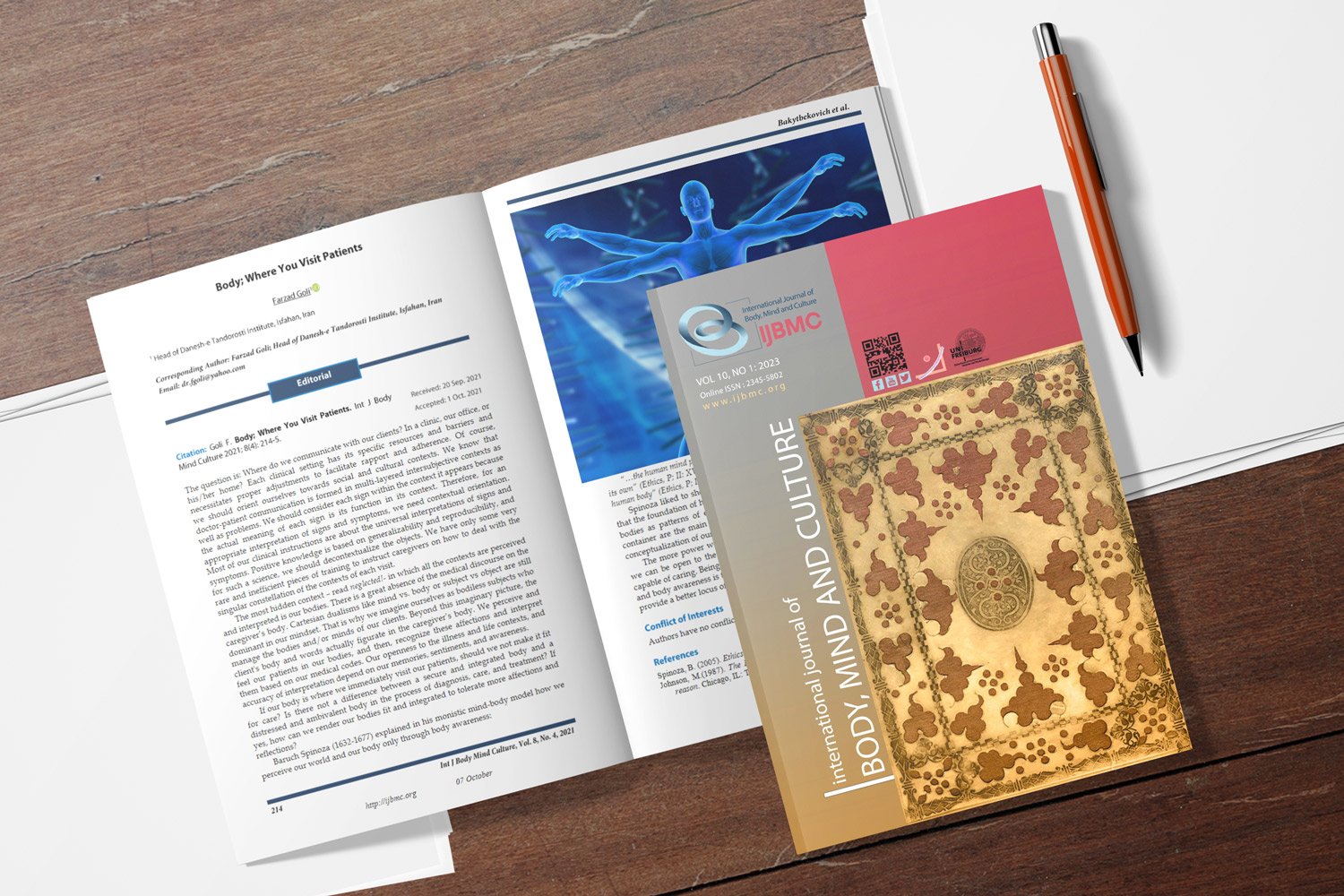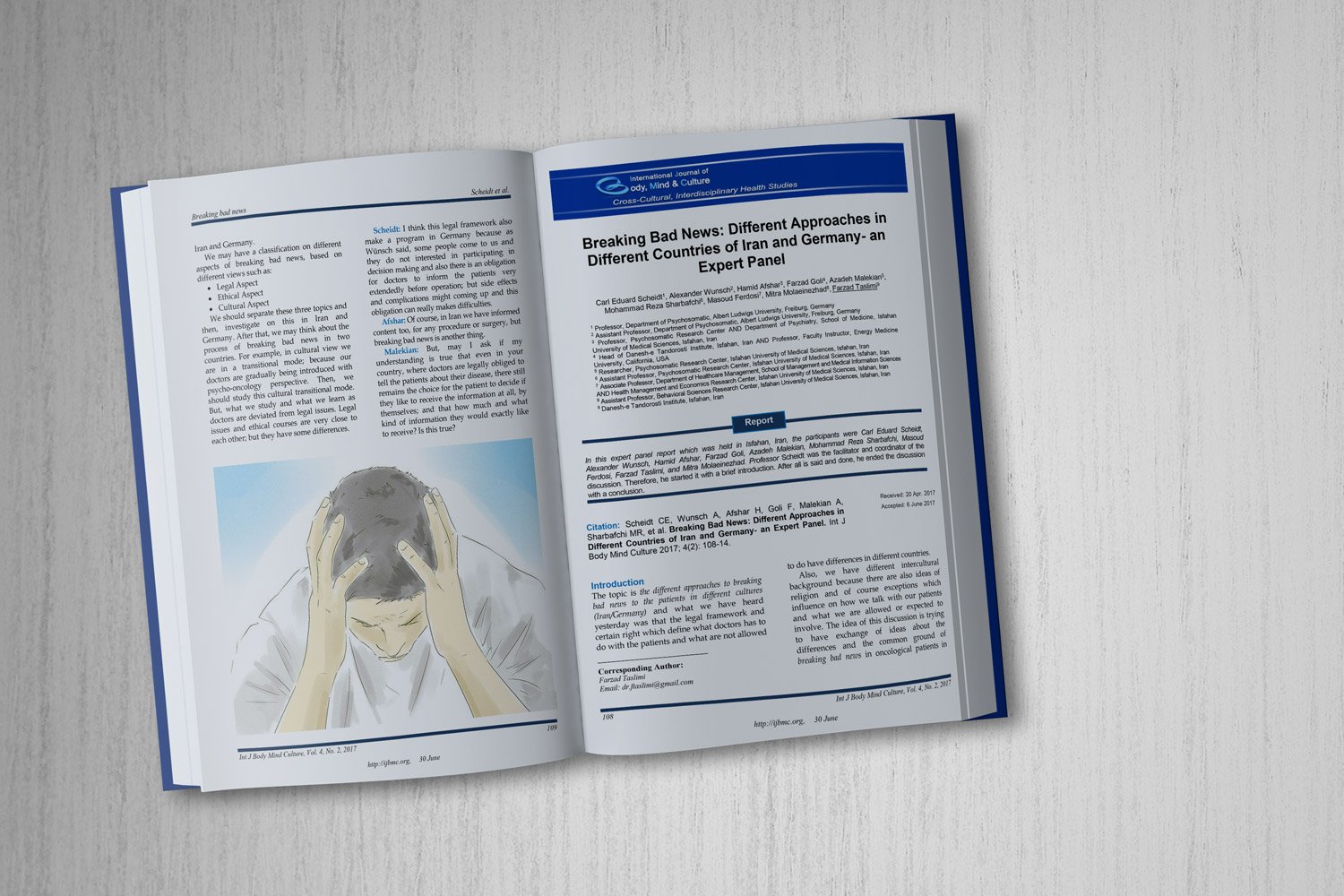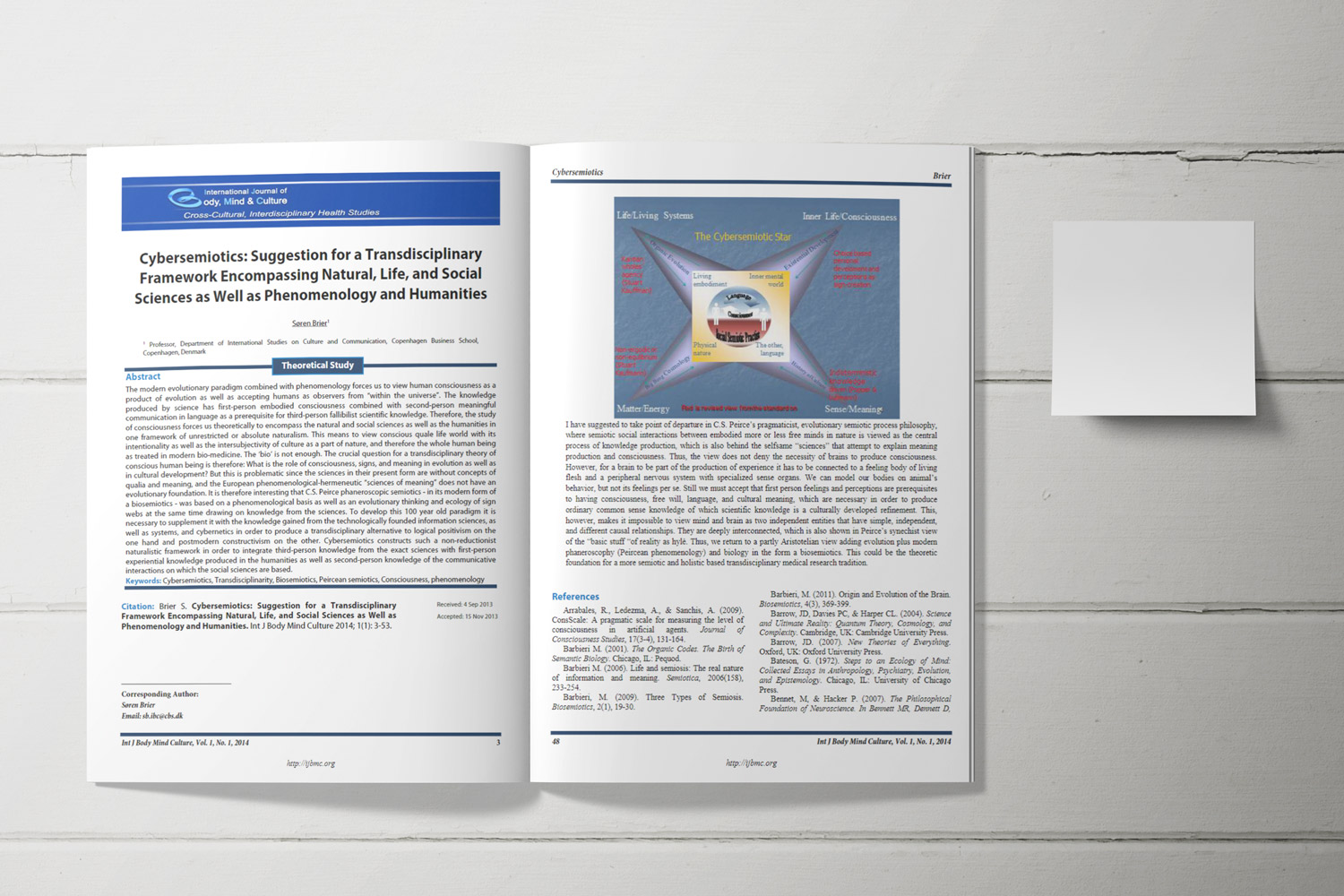Effectiveness of Acceptance and Commitment Therapy (ACT) on Pain Perception and Acceptance in End-Stage Cancer Patients
Downloads
Objective: This study examined the effectiveness of ACT on pain perception and pain acceptance in end-stage cancer patients.
Methods and Materials: A quasi-experimental design with pre-test, post-test, and follow-up stages was used. Thirty end-stage cancer patients at Imam Khomeini Hospital in Tehran were selected via convenience sampling and randomly assigned to either an experimental group (n=15) or a control group (n=15). The intervention group received eight weekly ACT sessions based on Hayes et al.'s protocol, while the control group was placed on a waitlist. Pain perception and acceptance were assessed using the McGill Pain Questionnaire (MPQ). Data were analyzed using repeated measures ANOVA via SPSS version 24.
Findings: A statistically significant group-by-time interaction was observed in pain perception and acceptance (F = 26.83, p < 0.001), indicating that ACT led to notable improvements in the experimental group. No significant changes were observed in the control group. The intervention effects remained stable at follow-up.
Conclusion: ACT appears to be an effective intervention for improving pain perception and acceptance in End-Stage Cancer Patients. These findings highlight the value of integrating ACT into palliative care to enhance psychological adaptation and quality of life in this vulnerable population.
Downloads
A-Tjak, J. G., Morina, N., Topper, M., & Emmelkamp, P. M. (2018). A randomized controlled trial in routine clinical practice comparing acceptance and commitment therapy with cognitive behavioral therapy for the treatment of major depressive disorder. Psychotherapy and Psychosomatics, 87(3), 154-163. https://doi.org/10.1159/000486807
Arch, J. J., & Mitchell, J. L. (2016). An Acceptance and Commitment Therapy (ACT) group intervention for cancer survivors experiencing anxiety at re‐entry. Psycho‐oncology, 25(5), 610-615. https://doi.org/10.1002/pon.3890
Arch, J. J., Mitchell, J. L., Schmiege, S. J., Levin, M. E., Genung, S. R., Nealis, M. S., Fink, R. M., Bright, E. E., Andorsky, D. J., & Kutner, J. S. (2022). A randomized controlled trial of a multi-modal palliative care intervention to promote advance care planning and psychological well-being among adults with advanced cancer: study protocol. BMC Palliative Care, 21(1), 198. https://doi.org/10.1186/s12904-022-01087-z
Asghari, A., & Nicholas, M. K. (2009). An investigation of pain self-efficacy beliefs in Iranian chronic pain patients: a preliminary validation of a translated English-language scale. Pain medicine, 10(4), 619-632. https://doi.org/10.1111/j.1526-4637.2009.00623.x
Azkhosh, M., & Asgari, A. (2014). Five factor model in Iranian culture: A psychometrics analysis of NEO-five factor inventory (NEO-FFI). Int J India Psychol, 1(4), 78-85. https://doi.org/10.25215/0104.028
Bach, P., & Hayes, S. C. (2002). The use of acceptance and commitment therapy to prevent the rehospitalization of psychotic patients: a randomized controlled trial. Journal of consulting and clinical psychology, 70(5), 1129. https://doi.org/10.1037/0022-006X.70.5.1129
Blackledge, J. T., & Hayes, S. C. (2006). Using acceptance and commitment training in the support of parents of children diagnosed with autism. Child & Family Behavior Therapy, 28(1), 1-18. https://doi.org/10.1300/J019v28n01_01
Bond, F. W., & Bunce, D. (2003). The role of acceptance and job control in mental health, job satisfaction, and work performance. Journal of applied psychology, 88(6), 1057. https://doi.org/10.1037/0021-9010.88.6.1057
DeRubeis, R. J., Strunk, D. R., & Lorenzo-Luaces, L. (2016). Mood disorders. https://doi.org/10.1037/14862-002
Dworkin, R. H., Turk, D. C., Revicki, D. A., Harding, G., Coyne, K. S., Peirce-Sandner, S., Bhagwat, D., Everton, D., Burke, L. B., & Cowan, P. (2009). Development and initial validation of an expanded and revised version of the Short-form McGill Pain Questionnaire (SF-MPQ-2). Pain®, 144(1-2), 35-42. https://doi.org/10.1016/j.pain.2009.02.007
Feros, D. L., Lane, L., Ciarrochi, J., & Blackledge, J. T. (2013). Acceptance and Commitment Therapy (ACT) for improving the lives of cancer patients: a preliminary study. Psycho‐oncology, 22(2), 459-464. https://doi.org/10.1002/pon.2083
García-López, L. J., Olivares, J., Hidalgo, M. D., Beidel, D. C., & Turner, S. M. (2001). Psychometric properties of the social phobia and anxiety inventory, the Social Anxiety Scale for Adolescents, the Fear of Negative Evaluation Scale, and the Social Avoidance and Distress Scale in an adolescent Spanish-speaking sample. Journal of Psychopathology and behavioral assessment, 23(1), 51-59. https://doi.org/10.1023/A:1011043607878
Graham, C. D., Gouick, J., Krahé, C., & Gillanders, D. (2016). A systematic review of the use of Acceptance and Commitment Therapy (ACT) in chronic disease and long-term conditions. Clinical psychology review, 46, 46-58. https://doi.org/10.1016/j.cpr.2016.04.009
Hayes, S. C., Strosahl, K. D., & Wilson, K. G. (2011). Acceptance and commitment therapy: The process and practice of mindful change. Guilford press. https://psycnet.apa.org/record/2012-00755-000
Leahy, R. L., Tirch, D., & Napolitano, L. A. (2011). Emotion regulation in psychotherapy: A practitioner's guide. Guilford press. https://books.google.com/books?id=CrNfHw7XV-EC&lpg=PP1&ots=m0lkCQ_yVQ&dq=Leahy%2C%20R.%20L.%2C%20Tirch%2C%20D.%2C%20%26%20Napolitano%2C%20L.%20A.%20(2011).%20Emotion%20regulation%20in%20psychotherapy%3A%20A%20practitioner's%20guide.%20Guilford%20press.&lr=lang_en&pg=PR4#v=onepage&q=Leahy,%20R.%20L.,%20Tirch,%20D.,%20&%20Napolitano,%20L.%20A.%20(2011).%20Emotion%20regulation%20in%20psychotherapy:%20A%20practitioner's%20guide.%20Guilford%20press.&f=false
Levitt, J. T., Brown, T. A., Orsillo, S. M., & Barlow, D. H. (2004). The effects of acceptance versus suppression of emotion on subjective and psychophysiological response to carbon dioxide challenge in patients with panic disorder. Behavior therapy, 35(4), 747-766. https://doi.org/10.1016/S0005-7894(04)80018-2
Lewandowska, A., Rudzki, G., Lewandowski, T., Próchnicki, M., Rudzki, S., Laskowska, B., & Brudniak, J. (2020). Quality of life of cancer patients treated with chemotherapy. International journal of environmental research and public health, 17(19), 6938. https://doi.org/10.3390/ijerph17196938
Lippi, A. (2025). Individual food preferences for the Mediterranean Diet in cancer patients.
Loeser, J. D. (2001). Tic douloureux. Pain Research and Management, 6(3), 156-165. https://doi.org/10.1155/2001/108138
Matthews, A. K. (1998). Lesbians and cancer support: Clinical issues for cancer patients. Health Care for Women International, 19(3), 193-203. https://doi.org/10.1080/073993398246368
Mehrabi, N., Amiri, H., Omidi, A., & Sarvizadeh, M. (2024). The effectiveness of group compassion-focused therapy on body image and interpersonal stress among women with breast cancer: a randomized controlled trial. IJ Psychiatry and Behavioral Sciences, 18(1). https://doi.org/10.5812/ijpbs-139764
Melzack, R., Vetere, P., & Finch, L. (1983). Transcutaneous electrical nerve stimulation for low back pain: a comparison of TENS and massage for pain and range of motion. Physical Therapy, 63(4), 489-493. https://doi.org/10.1093/ptj/63.4.489
Nicholas, M. K., & Blyth, F. M. (2016). Are self-management strategies effective in chronic pain treatment? Pain management, 6(1), 75-88. https://doi.org/10.2217/pmt.15.57
Nutt, D. J., Davidson, J., Zohar, J., & Zohar, J. (2009). Post Traumatic Stress Disorders. Informa Healthcare. https://10.1016/j.psc.2009.06.001
Robbins, T. (2012). Awaken the giant within. Simon and Schuster. https://books.google.com/books?id=iPpyLpX0Y1sC&lpg=PT1&ots=WKUDj1QaGR&dq=Robbins%2C%20T.%20(2012).%20Awaken%20the%20giant%20within.%20Simon%20and%20Schuster.&lr=lang_en&pg=PP1#v=onepage&q=Robbins,%20T.%20(2012).%20Awaken%20the%20giant%20within.%20Simon%20and%20Schuster.&f=false
Roemer, L., Orsillo, S. M., & Salters-Pedneault, K. (2008). Efficacy of an acceptance-based behavior therapy for generalized anxiety disorder: evaluation in a randomized controlled trial. Journal of consulting and clinical psychology, 76(6), 1083. https://doi.org/10.1037/a0012720
Rost, S., Van Ryckeghem, D. M., Koval, P., Sütterlin, S., Vögele, C., & Crombez, G. (2016). Affective instability in patients with chronic pain: a diary approach. Pain, 157(8), 1783-1790. https://doi.org/10.1097/j.pain.0000000000000582
VESAL, M., MOLLAZADE, J., TAGHAVI, M., & NAZARINIA, M. (2015). Prediction of depression based on perception of pain and quality of sleep due to pain catastrophizing in elderly patient with rheumatoid arthritis. https://sid.ir/paper/328574/en
Yen, K. Y., Cheng, J. Y., Li, J.-Q., Toh, Z. A., & He, H.-G. (2024). The effectiveness of digital psychosocial interventions on psychological distress, depression, anxiety, and health-related quality of life in patients with gynaecological cancer: a systematic review and meta-analysis. Supportive Care in Cancer, 32(4), 240. https://doi.org/10.1007/s00520-024-08415-4
Zettle, R. D. (2004). ACT with affective disorders. In A practical guide to acceptance and commitment therapy (pp. 77-102). Springer. https://doi.org/10.1007/978-0-387-23369-7_4
Zettle, R. D., & Hayes, S. C. (1986). Dysfunctional control by client verbal behavior: The context of reason-giving. The Analysis of verbal behavior, 4(1), 30-38. https://doi.org/10.1007/BF03392813
Zettle, R. D., & Hayes, S. C. (1987). Component and process analysis of cognitive therapy. Psychological Reports, 61(3), 939-953. https://doi.org/10.2466/pr0.1987.61.3.939
Zettle, R. D., Rains, J. C., & Hayes, S. C. (2011). Processes of change in acceptance and commitment therapy and cognitive therapy for depression: A mediation reanalysis of Zettle and Rains. Behavior modification, 35(3), 265-283. https://doi.org/10.1177/0145445511398344
Copyright (c) 2025 International Journal of Body, Mind and Culture

This work is licensed under a Creative Commons Attribution-NonCommercial 4.0 International License.










